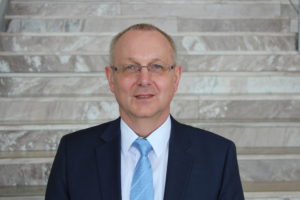2019 IO-Link Member Meeting
This year’s international Member Meeting of the IO-Link community, which took place on June 26, 2019, in Frankfurt am Main, Germany once again generated overwhelming interest. 58 participants representing 50 member companies showed their interest in IO-Link news and developments. In consideration of the increasingly international nature of the community (255 member companies in 16 countries), the presentations were recorded. This enables every member in the world (as well as anyone else who’s interested) to access “the spoken word” in addition to the informational material presented.
You can access the videos through the IO-Link Website.
IO-Link Success Stories
In addition to general information and the status of on-going work on documentation and specifications, the organizers once again placed great value on the presentation of example applications. These applications show how the advantages offered by IO-Link increase the sensory capabilities of products, thus making the products themselves more intelligent and flexible. The example applications also illustrate how the specification work of the community is implemented in products.
Using gripper systems as an example, the presentation of the SCHUNK GmbH & Co. KG company demonstrated the path from purely pneumatic grippers to intelligent grippers using IO-Link technology in a very clear way. An amazing increase in functionality and the associated increase in flexibility of the products were achieved in this way. Additional processes can also be optimized and, for example, condition monitoring efficiently implemented by evaluating additional diagnostic data and the service information from the IO-Link sensors used.
IO-Link Industry 4.0 and IoT
Following this, the presentation by Siegen, Germany-based GIB mbH redirected the focus to the topic of digital transformation in production. Through practical use cases from the field of condition monitoring, it became clear how IO-Link products support corresponding software modules in higher-level systems (in this case, SAP systems) so as to, for example, create automated service orders from sensor data and supply them with precise, correct information down to the availability of spare parts. This also makes it possible to leave behind the purely relative (lots of production time can be lost) and purely preventive (expensive) initiation of service calls and achieve optimization of the entire service process with sensor-based condition monitoring. It is an impressive contribution to digital transformation in production thanks to IO-Link technology.
The Internet of Things (IoT) and Industry 4.0 require transparent communication from the lowest sensor/actuator level to mobile, cloud-based applications – in other words, data consistency from the sensor to the cloud. This is currently fueling the development of IO-Link technology as well.
The presentation by the Hilscher company executed a technical implementation of an Edge gateway as an example. Here, an IO-Link master device connected to Profinet was expanded with additional Edge functionality and connectivity, which is independent and doesn’t affect Profinet data traffic. The recently released IO-Link OPC UA Companion Standard was also implemented.
An impressive demonstration was given to show how the IO-Link master and its parameters, vendor ID and process data are represented by OPC UA and how data – even compressed and preprocessed data – can be uploaded to a cloud in the Siemens MindSphere example.
Moving Forward
The entire event impressively demonstrated the mindset of the IO-Link community. Important topics formulated in a higher-level strategy, or big picture, are being consistently pursued, completing our big picture in so doing. A continuous improvement process is part of the community’s activities. The rapid implementation of developed standards in products will accelerate the success of IO-Link technology.
 Reinhard Schlagenhaufer
Reinhard Schlagenhaufer
Head of IO-Link Steering Committee
